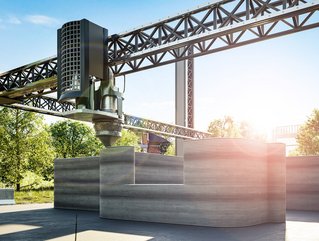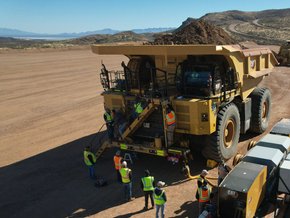COBOD's BOD2 3D printer used to build a school in Ukraine

Humanitarian foundation Team4UA and the 3DCP Group have partnered to build the first 3D printed school in Lviv, Ukraine. The project has been anticipated to be completed by the end of June 2023, representing a significant milestone in European construction. It also raises the profile of 3D printed buildings, which is an area of the construction industry experiencing a boom in 2023.
The project utilises the COBOD BOD2 3D printer, which is currently one of the leading 3D construction printers worldwide, and aims to address the pressing need for educational infrastructure in the country of Ukraine.
Revolutionary construction: " this is the least we could do"
As reported by 3D Printing Industry, COBOD has said that the new primary school building consists of a single floor and covers an area of 370 metres-squared, and is designed to create a supportive and nurturing environment for the young students. It will accommodate classrooms, a teacher’s room, bathrooms, and a spacious hall.
This is particularly poignant as many school students will be displaced due to the devastating impact of the war in Ukraine. The country faces more than 2,000 damaged schools, with approximately 25% of schools nationwide actually being able to offer full-time, in-person learning since September 2022.
The BOD2 modular truss structure allows for the printer to be configured exactly to each project, and can be upscaled and downscaled to suit larger and smaller projects that you may have in your pipeline. The light weight combined with the incredible stiffness of the steel truss structure guarantees a rigid, sturdy construction that will endure rough treatment and ensures stable and reliable printing year after year.
The architect on the schools project also chose to clearly highlight that the building will be built via the use of 3D printing by deliberately printing very smooth walls. In addition, 90% of the construction materials will be locally produced in Ukraine, further hoping to stimulate the economy and empower the community. In fact, 99% of the materials for the 3D printed concrete has been sourced at a low cost locally.
The construction of Europe’s first 3D printed school is seen by COBOD as an example of the resilience and determination of the Ukrainian people. Through this project, a significant milestone is marked in the ongoing efforts of reconstruction, serving as a blueprint for how construction companies can utilise advanced technology to help tackle pressing societal issues.
Henrik Lund-Nielsen, Founder & General Manager of COBOD said: “We are proud to have delivered the technology that makes this project possible. The proud people of Ukraine deserve all the support we can provide, and I am happy we have been able to donate all that we have been doing in this project for free.
“Out of the respect for the impressive fighting will Ukraine has shown on behalf of all of the rest of Europe and the rest of the democratic world, this is the least we could do.”






